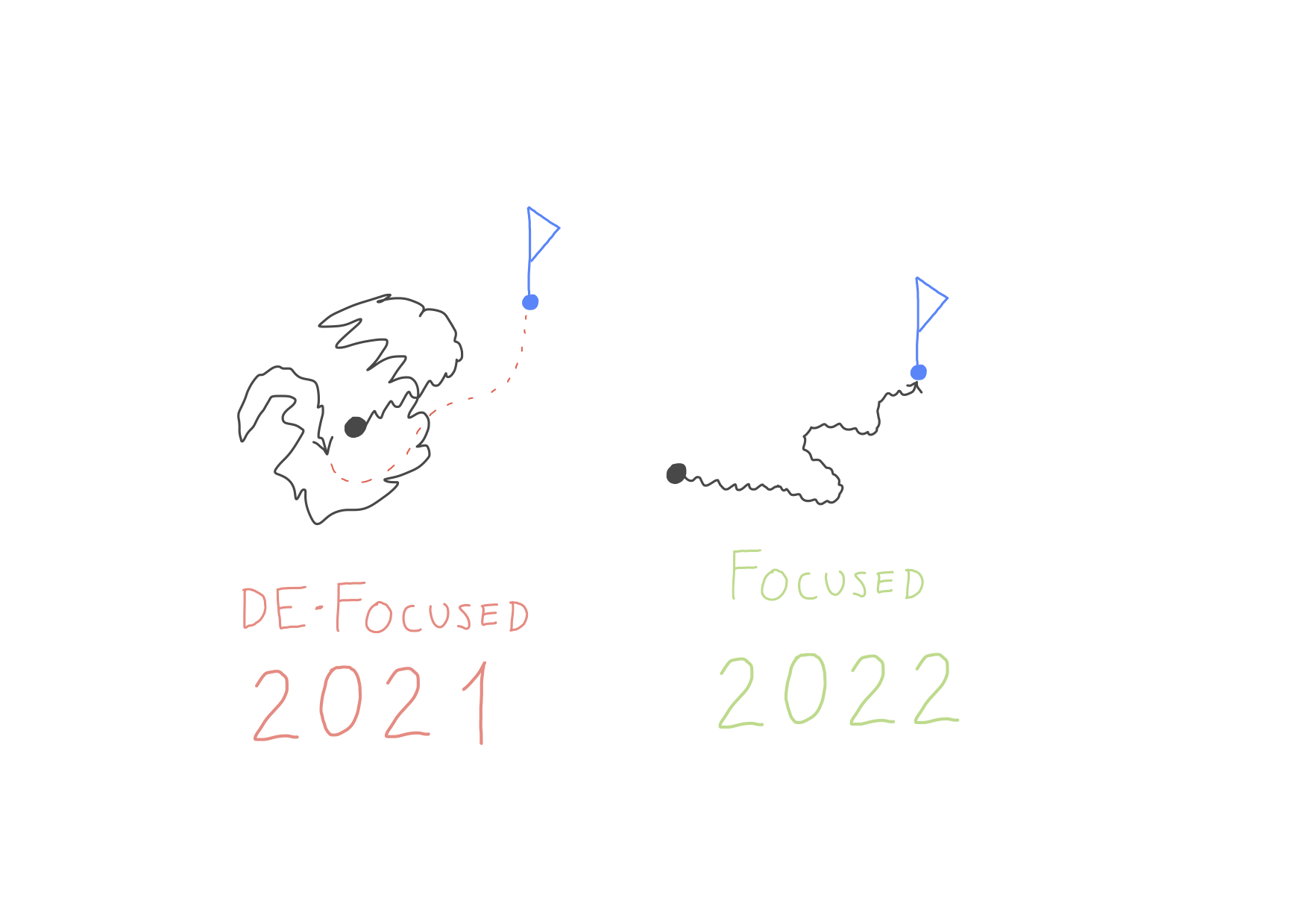♦ 🐆 3 min, 🐌 6 min
Life Experiment 5, 2022
Hey There.So yes, I'm still alive. What happened?Well, Life Happened. Or, to be precise, I was overstressing myself regarding my PhD instead of taking the time to write. Yeah, I managed to go so far that when I started my month-long vacation during mid-December, I had a heart rate of 90 BPM. At rest! That's a little less than what I have when I go for a long run ... Go figure. I managed to decompress and am now back to normal, but still, ... The long vacation did me some good, and after a month of sleeping 😴 I'm back. I vowed to worry less. I managed to worry less in the first week of work, but we'll see how that self-stress generator of mine behaves in the future.The general conclusion of the month-long sabbatical was that I stress myself too much and that: There will always be an infinite amount of physics to explore and learn if I write the newsletter or not.So I'm writing the newsletter again 🙂 As I look back, I wish I shared some of the aha moments from the second half of 2021 with you, but well, what's done is done.The primary strategy for 2022 is to actually get somewhere and not walk around in circles:
Long Term Focus for Knowledge Workers by the end of the year. Book is still the goal, and I have around 100+ pages already. But I realised that I'll have to do some experimentation first before I can publish a bit less crapy book. So in 2022, I'll try to host a few online courses on the topic of Long Term Focus. We'll see how that goes.So did that PhD stressing do me any good? Actually yeah. In fact, a lot. I know or pretend to know what my PhD topic will be. Sth. Along the lines of Transfer maps for ion dynamics in mass spectrometry (if this tells you anything). I like to joke that I now have the title and the direction. Now I just have to do the PhD. Or more like keep my emotions in check and not do another 360. On doing pirouettes and doing illogical stuff. Apparently, I should stop suppressing that I'm a physicist in my newsletters even more. I know I said this before, but yeah, it wasn't until recently that a few of my new online friends explained this to me in a way that I actually understood 🙂 So first attempt:Few bits on Science
Over the holidays, I've been reading about the history of science. One of the short books that I finished was written by Hardy: A Mathematician's Apology , published in 1941. It's actually not that abstract and worth reading, even if you're not from the STEM world. Hardy explores the topic of how one should evaluate the meaning of his/her's career. What's worth working on. How to assess what you're are doing with your life?I never thought I would take advice on existentialism from a mathematician ... But apparently, they can apply logic to more than numbers 🙂 Hardy was one of the Mathematicians based at Cambridge that worked with the prodigy Srinivasa Ramanujan and also collaborated with John Edensor Littlewood . All three mathematicians were quite famous for their time. Some of their stories are portrayed in the movie: The Man Who Knew Infinity . Ramanujan and Hardy managed to publish a lot of fairly influential work on numbers theory during WWI. In his bookMathematician's Apology, Hardy writes how he sees no practical use of numbers theory and general relativity. That was 1941. In 1945 we had the first atom bomb and well first significant "application" of relativity, ... At first glance, one would say that Numbers theory wasn't used in applicable fields till much later. But in fact, during WWII, Turing and colleges at Bletchley Park, UK, actually already developed the first serious computer named Colossus . Colossus was used to decrypt messages that Nazis encrypted with Enigma. The designs used some of the ideas from numbers theory. The joke goes: To decrypt Enigma, you need to know only how to greet one man. In German! More in The Imitation Game movie.A few year's later (1974), Donald Knuth (BTW inventor of Latex) said:...virtually every theorem in elementary number theory arises in a natural, motivated way in connection with the problem of making computers do high-speed numerical calculations.Hardy passed away in 1947. And little did he know how wrong he was with his predictions of future applicability of basic science. Hardy might have been an influential mathematician of his time. Still, like all of us, he fell under the cognitive bias in some sense. He failed to see that maybe future generations would find the applications for his work in ways he couldn't imagine. Quite soon, in fact, before his death. So are you failing to recognise what the future might hold? Hope our future isn't NTF 's, though, but hey, I'll say that maybe they are, so I don't get called out in 100 years.Cheers.ZigaP.s. If anyone knows where to get Littlewood's Adventures in ballistics let me know. He describes some of the stories in the books that he experienced during WWI when calculating ballistics for the British military.P.s.s. Oh, and pre-newsletter writing procrastination on YouTube is also back. So all good. Apparently, one only has to start writing. Then it's easy. Who knew?
Get notified & read regularly 👇